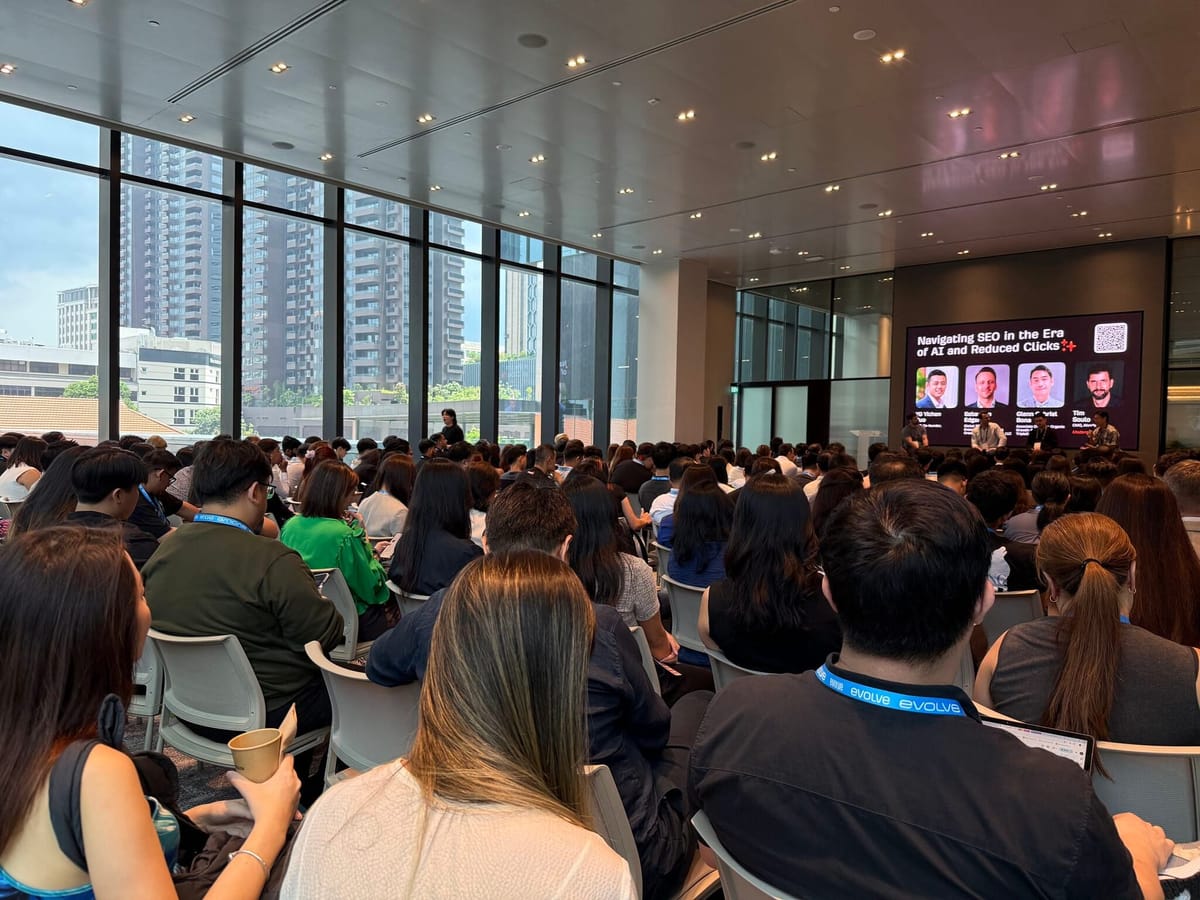The Ultimate Guide: SEO, Programmatic SEO, GEO, and Programmatic GEO

Understanding SEO, Programmatic SEO, and GEO: The Next Generation of Brand Exposure
In the world of the internet, traffic is everything. Whether you're selling products, providing services, or creating content, how users find you is the key to your success or failure. And this “how users find you” has traditionally relied on Google search, but is now increasingly dependent on AI-generated engines like ChatGPT and DeepSeek.
This leads to the evolution of three optimization strategies:
✅ Stage 1: SEO (Search Engine Optimization)
✅ Stage 2: Programmatic SEO
✅ Stage 3: GEO (Generative Engine Optimization)
✅ Stage 4: Programmatic GEO (Generative Engine Optimization)
Let's break it down step by step
✅ Stage 1: Traditional SEO (Search Engine Optimization)
What is SEO?
SEO (Search Engine Optimization) is the process of optimizing your website through a series of technical and content strategies to achieve higher rankings in the organic search results of search engines like Google and Baidu, thereby attracting more free, targeted traffic.
For example: You are selling coffee machines. You write an article titled:
“The Best Home Coffee Machines to Buy in 2025”
If someone searches for “the best coffee machine” on Google, your article appearing on the first page is likely to drive traffic and even convert into orders.
The core principle of SEO: Meeting user search intent
Before diving into all the technical details, it is essential to understand the core principle of SEO rankings: meeting user search intent (Search Intent).
The ultimate goal of search engines is to provide the most satisfactory answers for every user search. Therefore, whether your page ranks highly depends directly on how well it can understand and meet the true needs behind a user's search for a particular keyword. This is more important than any technical trick.
Key factors affecting Google search rankings
| Ranking Factor | Brief Explanation |
|---|---|
| Internal Linking Optimization | Strategically add internal links to improve page relevance and help search engines crawl and index content better. |
| Rendering and Crawling | Page structure must be successfully rendered and crawled by search engines (avoid important content being blocked by JS), facilitating indexing and inclusion. |
| Keyword Optimization | Keywords should appear in titles, descriptions, body text, H tags, and image ALT attributes to enhance content-search intent matching. |
| Content Quality | Original, in-depth content that solves user problems is central to search engine rankings. |
| Website Structure and Experience | Fast page loading, mobile-friendliness, and clear structure improve user experience, indirectly affecting rankings. |
| Backlinks | Links from other authoritative websites to your site can significantly increase authority and trust. |
| Technical SEO Support | Use HTTPS, properly configure robots.txt and sitemap, and avoid broken links and duplicate content. |
| User Behavior Metrics | High click-through rates, low bounce rates, and long dwell times indicate content meets user needs, influencing search engine judgment. |
- Keyword Research - The Starting Point of Strategy
To meet search intent, you first need to know what users are searching for.
How to conduct keyword research?
- Brainstorming and user insights: Put yourself in the user's shoes and think about the words they would use to describe their problems or needs.
- Use professional tools: Leverage tools like Google Keyword Planner, Ahrefs, and Semrush to uncover more relevant keywords and understand their search volume and competitiveness.
- Analyze competitors: Examine the top-ranking competitor websites to see which keywords they are targeting in their content.
- Understand search intent: This is the most critical step. What is the underlying motivation behind a user's search query? This determines the type of content you should create.
Four core types of SEO keywords (classified by search intent):
- Informational: Users want to learn and understand knowledge.
- Examples: “What is a latte?” “What tools are needed for pour-over coffee?”
- Corresponding content: Blog posts, how-to guides, video tutorials.
- Navigational: Users want to visit a specific website.
- Examples: “Starbucks official website,” “Minority Report.”
- Corresponding content: Your brand's official website, product landing pages.
- Commercial Investigation: Users are comparing and researching before making a purchase.
- Examples: “De'Longhi coffee machine vs. Philips coffee machine,” “Best capsule coffee machine reviews.”
- Corresponding content: Product comparison articles, in-depth reviews, Top 5/Top 10 recommendation lists.
- Transactional: Users have a clear intention to purchase.
- Examples: “Purchase a Nespresso coffee machine,” “Coffee bean coupons.”
- Corresponding content: Product pages, promotional activity pages, price pages.
- Page and Content Optimization (On-Page SEO)
- High-quality content is king: Articles must be original, detailed, and truly address users' questions.
- Use of titles, H1, and H2 tags:
- Page title (Title Tag): The title displayed in search results, which should include core keywords.
- H1 tag: The main title of the article, used only once per page.
- H2 and H3 tags: Subheadings used to organize the article structure and improve readability.
- Internal linking: Linking to other relevant pages within the website within the article to help search engines discover content and pass on authority.
- Technical SEO
This is the website's infrastructure, ensuring that search engines can crawl and index it smoothly. It includes website speed, mobile compatibility, website structure, HTTPS security, etc.
- Authority Building (Off-Page SEO)
Backlinks: When other high-quality websites link to yours, search engines will consider your content authoritative and improve your ranking.
✅ Phase 2: Programmatic SEO
What is programmatic SEO? (In simple terms)
Programmatic SEO uses “page templates” + “databases” to automatically and batch-generate hundreds or thousands web pages that cover many SEO keywords. So you get traffic from many search keywords
For example:
Suppose you operate a travel information website. Manually writing “ 5 Must-See Attractions in [City Name]” one article at a time is too inefficient.
- The programmatic SEO approach is: Create a “page template”: This template designs a unified structure for the page, such as:
- Title: 5 Must-See Attractions in [City Name]
- First paragraph: Welcome to [City Name]! This city is famous for [city characteristics].
- List of attractions: 1. [Attraction 1] 2. [Attraction 2]...
- Transportation Guide: How to get to [City Name]?
- Prepare a “Database”: This database (e.g., a table) contains all the information you need:
| City Name | City Feature | Attraction 1 | Attraction 2 |
|---|---|---|---|
| Paris | Romantic Capital | Eiffel Tower | Louvre Museum |
| Tokyo | Trendy Metropolis | Senso-ji Temple | Tokyo Tower |
| Rome | Ancient Empire | Colosseum | Trevi Fountain |
- One-click generation: The program automatically fills each row of data in the database into the page template, instantly generating hundreds of web pages:
- The 5 most worthwhile attractions in Paris
- The 5 most worthwhile attractions in Tokyo
- The 5 most worthwhile attractions in Rome
Core advantage: Cover a large number of “long-tail keywords” (such as “Paris attractions” and “Tokyo tourism”) at a very low cost on a large scale to capture more accurate search traffic.
✅ Stage Three: GEO (Generative Engine Optimization)
As search evolves from traditional engines to generative and conversational platforms like ChatGPT or Google’s AI Overviews, a new discipline is emerging: Generative Engine Optimization (GEO) or Answer Engine Optimization (AEO). While SEO focused on ranking in the ten blue links of Google, GEO and AEO focus on influencing the answers AI systems generate directly for users.
From SEO to GEO/AEO
Traditional SEO was about optimizing for search results pages — keywords, backlinks, and metadata that helped you rank higher on Google. Users typed short, generic queries (“best running shoes”), and clicked multiple sites to find the right one.
But with AI-driven search, user behavior changes dramatically. People now ask instead of searching, and AI tools summarize the answers — often mentioning specific brands or products without the user ever visiting a site. That means visibility now depends on being included in these AI-generated responses.
How People Search Differently in AI Engines
- Product Comparisons
In traditional SEO, a user might search for “best running shoes,” click 10 websites, and compare manually.
Now, people ask ChatGPT:
“List the top 10 running shoes for men with pros, cons, and prices.”
To appear in these answers, brands need comparison-based content and listicles that clearly outline why their product is superior — content that AI can easily reference and synthesize.
We need to create listicles or product comparison pages to address these queries
- How-To Content That Leads to Recommendations
When users ask “How to do keyword research” or “How to improve my running form,” AI engines often recommend tools or products. That means how-to pages are now key entry points for product discovery — and should be optimized for AI understanding and reference.
We need to create how to pages to address these queries
- Highly Personalized, Long Queries
AI enables longer, more specific requests like:
“I need a running shoe with strong arch support, waterproof material, and light weight for trail running.”
To capture these queries, businesses need use-case pages — programmatically created content covering every combination of features, scenarios, and pain points.
We need to create use cases programmatically to cover all use cases
🧱 What Is Programmatic GEO?
Programmatic GEO means using structured templates, automation, and smart logic to build hundreds or thousands of long-tail, niche landing pages—each designed to match specific types of user questions.
This isn’t guesswork.
You’re building a content system based on real behavior.
The Rise of Programmatic GEO
Just as programmatic SEO automated the creation of landing pages for thousands of keywords, programmatic GEO scales content to cover AI-era queries.
It involves generating a large number of use-case, comparison, and how-to pages tailored for long-tail, conversational prompts — ensuring that when users ask AI engines complex or personalized questions, your product or brand is included in the generated answers.
🎯 How Do People Ask AI Questions Today?
Let’s break it down.
People usually include 3 key things in their prompt:
- Their identity or role
(e.g., "I'm a college student", "I'm a single parent", "I'm a digital nomad") - Their preferences or constraints
(e.g., "I don’t eat meat", "I have a small budget", "I don’t like using my phone much") - The task or decision they’re trying to make
(e.g., "recommend an app", "pick a restaurant", "find a tool")
Some real examples:
“I’m a freelancer who works from cafes. What’s the best productivity app that works offline and syncs with Notion?”
“We’re looking for a pet-friendly hotel in Seattle with parking and good Wi-Fi for remote work.”
“I’m a dad planning a weekend trip with two kids under 10. What’s a good itinerary for San Diego?”
These are long-form, context-rich queries. Generic content won’t answer them.

💡 The GEO Strategy: Build Landing Pages for Each Use Case
Here’s the secret to GEO:
👉 Turn these natural questions into long-tail landing pages.
These pages should:
- Match the language people use
- Solve specific use cases
- Be easy for AI to read and summarize
- Be genuinely helpful and clearly written
Here’s how you do it:
1. Identify categories or verticals
(e.g., Restaurants, Apps, Travel, SaaS, Products)
2. Map out common personas + use cases
- “College student looking for budget travel apps”
- “Busy parent looking for fast vegetarian dinners”
- “Marketing manager choosing a CRM for a small team”
3. Use a template to create hundreds of variations:
[Best X for Y doing Z under W conditions]
Examples:
- Best note-taking app for ADHD students who get distracted easily
- Best romantic sushi restaurants in LA for anniversary dinners
- Best CRMs for solopreneurs on a tight budget in 2024
- Best travel backpacks for remote workers with laptops
GEO's Core Principle: No longer catering to search engine crawlers, but becoming AI's “high-quality information source” and “knowledge mentor.”
✅ How does CapGo AI do it? — Starting from the user scenario, step-by-step implementation of SEO, programmatic SEO, and GEO
As a leading digital growth strategy team, CapGo AI does not take a “closed-door” approach when implementing GEO and programmatic SEO, but instead always starts from the user's business model and scenario.
🔍 Step 1: Understand the user's business + keyword research
We will communicate in depth with the client to clarify:
- Who are you? What do you sell?
- How do you want customers to find you?
- What issues do your customers care about most?
Based on this, we use our AI tools + Google search data, combined with semantic understanding and trend prediction, to generate hundreds of keyword combinations relevant to your business. These keywords cover:
- Product keywords
- Brand comparison keywords
- Question-based keywords (e.g., “Which is better?” “Are there cheaper alternatives?”)
- Location + service keywords (e.g., “Shanghai video editing studio recommendations”)
💡 Step 2: Free SEO optimization for your existing website
We will not only generate new SEO and GEO pages for you but also provide free optimization of your existing website's content structure and technical layers, such as:
- Adjusting the Meta information and titles of existing pages
- Improving content semantic quality and page loading speed
- Adding clear internal link structures and sitemaps
All of this is aimed at enhancing your website's overall SEO foundation score, ensuring that existing pages continue to drive traffic for you. ---
🤖 Step 3: Programmatic SEO — Generating landing pages for each keyword
Once keywords are identified, our AI will:
- Automatically create the page structure (UI, title, content) for each keyword
- Automatically generate content (CU) to ensure natural language, accurate information, and clear structure
- Automatically deploy to the user's website subpath (e.g., abc.com/top-ai-tools)
This way, your website will have dozens, hundreds, or even thousands of precise, structured SEO pages, significantly increasing search engine coverage while saving a significant amount of manual editing costs.---
🌟 Step 4: GEO — Get your brand into AI recommendation systems
Additionally, we will generate content formats optimized for AI reading and referencing for each keyword, such as:
- Brand comparison pages (Brand A vs. Brand B)
- “Top 5” recommendation pages (e.g., “Top 5 Collaboration Tools for 2025”)
- Question-based content (e.g., “Is Figma suitable for design beginners?”)
These are GEO-optimized content tailored for users, with the goal not to be captured by Google, but to be referenced and recommended by AI assistants like ChatGPT, DeepSeek, and Claude.
🌐 All pages are hosted under your domain: Your website becomes more powerfulAll pages generated by CapGo AI are hosted under your main domain, such as:
abc.com/top-video-editing-toolsabc.com/notion-vs-canvaabc.com/shanghai-coding-bootcampThis approach does not disrupt your existing website structure while seamlessly expanding your website's “search engine volume” and “AI recommendation potential.”
You have complete control and data rights, and the page looks like it was created by your team—but in reality, CapGo AI automatically completes everything for you.
✅ Summary: How CapGo AI provides full-process support for SEO + programmatic SEO + GEO
| Phase | CapGo AI's Work |
|---|---|
| Keyword Research | Generate keyword library based on company information + AI engine + Google data |
| Programmatic SEO | Automatically generate landing pages for each keyword and publish to the main site's subdirectory |
| GEO | Generate AI-friendly content (comparison pages, Top lists, Q&A structure) |
| SEO Optimization | Free assistance with optimizing client's existing website structure and content |
Final result: Your website will not only be searchable on Google, but will also have a better chance of being recommended on ChatGPT and DeepSeek, covering both “search + generation” dual-engine traffic channels.



